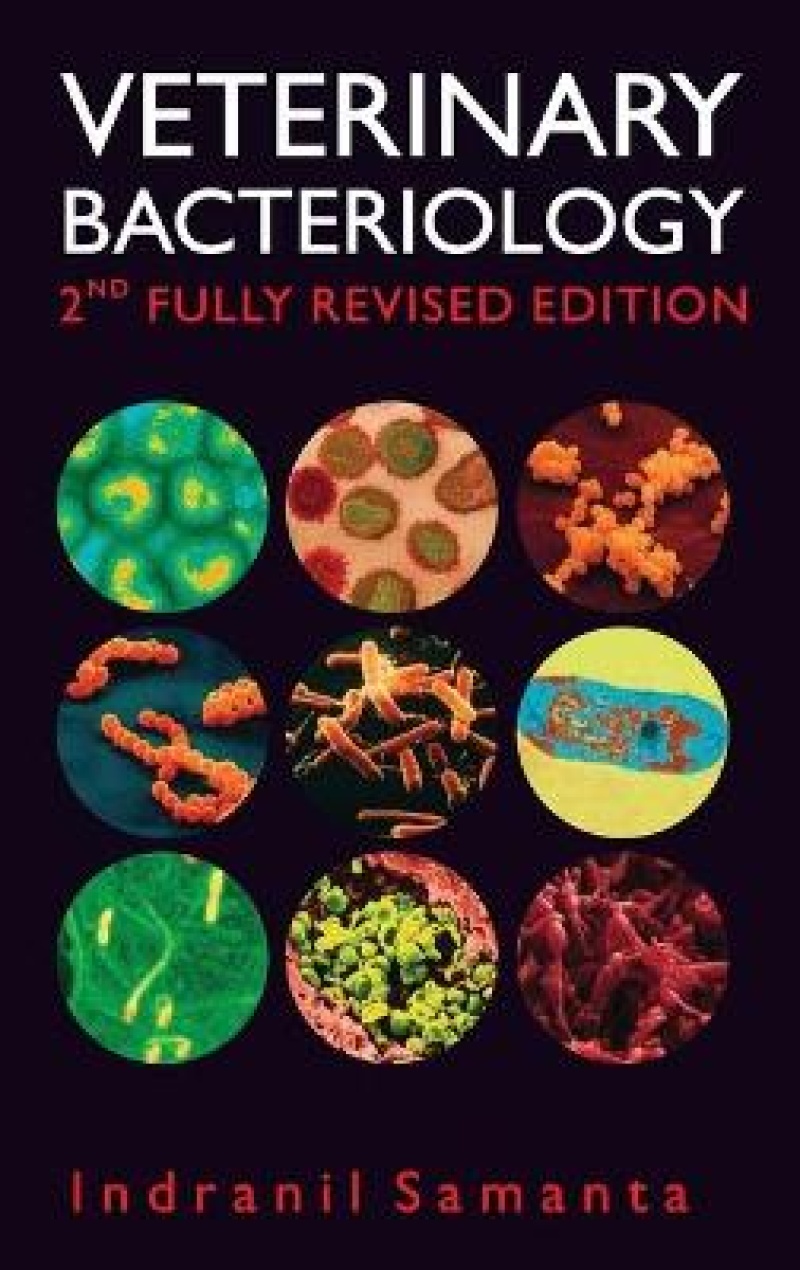The second edition of the book consists of a comprehensive and systematic Veterinary Bacteriology. The general Bacteriology section includes an introduction to and history of Microbiology, bacterial classification and nomenclature, microscopy and micrometry, bacterial staining techniques, bacterial structure and morphology, growth and nutritional requirements, infection types and sources, pathogenicity and virulence determinants, epizootic and enzootic diseases, bacterial toxins, bacterial genetics involving mutation, transformation, transduction, and conjugation, as well as plasmids and antibiotic resistance.
The systematic Bacteriology section presents updated information on each bacterial genuss history, morphology, classification, resistance, natural habitat, genome, isolation and colony characteristics, biochemical and antigenic properties, pathogenesis, diseases caused, and diagnosis, as they relate to animal and human health. This revised edition will be beneficial for individuals working as Government Veterinarians, independent animal health practitioners, or in laboratories for the diagnosis of animal diseases.
The book provides diagnostic techniques for each bacterial genus, ranging from staining methods to molecular tools, along with useful color photographs.
The systematic Bacteriology section presents updated information on each bacterial genuss history, morphology, classification, resistance, natural habitat, genome, isolation and colony characteristics, biochemical and antigenic properties, pathogenesis, diseases caused, and diagnosis, as they relate to animal and human health. This revised edition will be beneficial for individuals working as Government Veterinarians, independent animal health practitioners, or in laboratories for the diagnosis of animal diseases.
The book provides diagnostic techniques for each bacterial genus, ranging from staining methods to molecular tools, along with useful color photographs.
Les mer
- 1.Introduction and History of Microbiology,
- 2.Classification and Nomenclature of Bacteria,
- 3.Microscopy and Micrometry: Bacterial Stains and Techniques,
- 4. Structure and Morphology of Bacteria,
- 5.Growth and Nutritional Requirements of Aerobic and Anaerobic Bacteria,
- 6.Normal, Opportunistic and Saprophytic Bacterial Flora,
- 7.Bacterial Genetics,
- 8.Staphylococcus,
- 9. Streptococcus,
- 10.Corynebacterium, Trueperella and Rhodococcus,
- 11. Listeria and Erysipelothrix,
- 12.Bacillus,
- 13. Mycobacterium
- 14. Clostridium,
- 15.Actinomyces,
- 16. Nocardia,
- 17. Streptomyces and Dermatophilus,
- 18. Enterobacteriaceae,
- 19.Pseudomonas and Burkholderia,
- 20. Pasterurella and Mannheimia,
- 21.Actinobacillus, Haemophilus, Avibacterium and Gallibacterium,
- 22. Brucella,
- 23. Vibrio and Campylobacter,
- 24. Bordetella and Moraxella,
- 25. Gram-negative Anaerobes: Bacteriodes, Dichlobacteria and Fusobacterium,
- 26. Leptospira and other Spirochetes,
- 27. Mycoplasma,
- 28.Rickettsia, Neorickettsia, Ehrlichia, Anaplasma and Coxiella,
- 29.Chlamydia
Les mer
Produktdetaljer
ISBN
9789390591329
Publisert
2021-11-02
Utgave
2. utgave
Utgiver
Vendor
New India Publishing Agency
Vekt
935 gr
Aldersnivå
P, 06
Språk
Product language
Engelsk
Format
Product format
Innbundet
Antall sider
502
Forfatter
